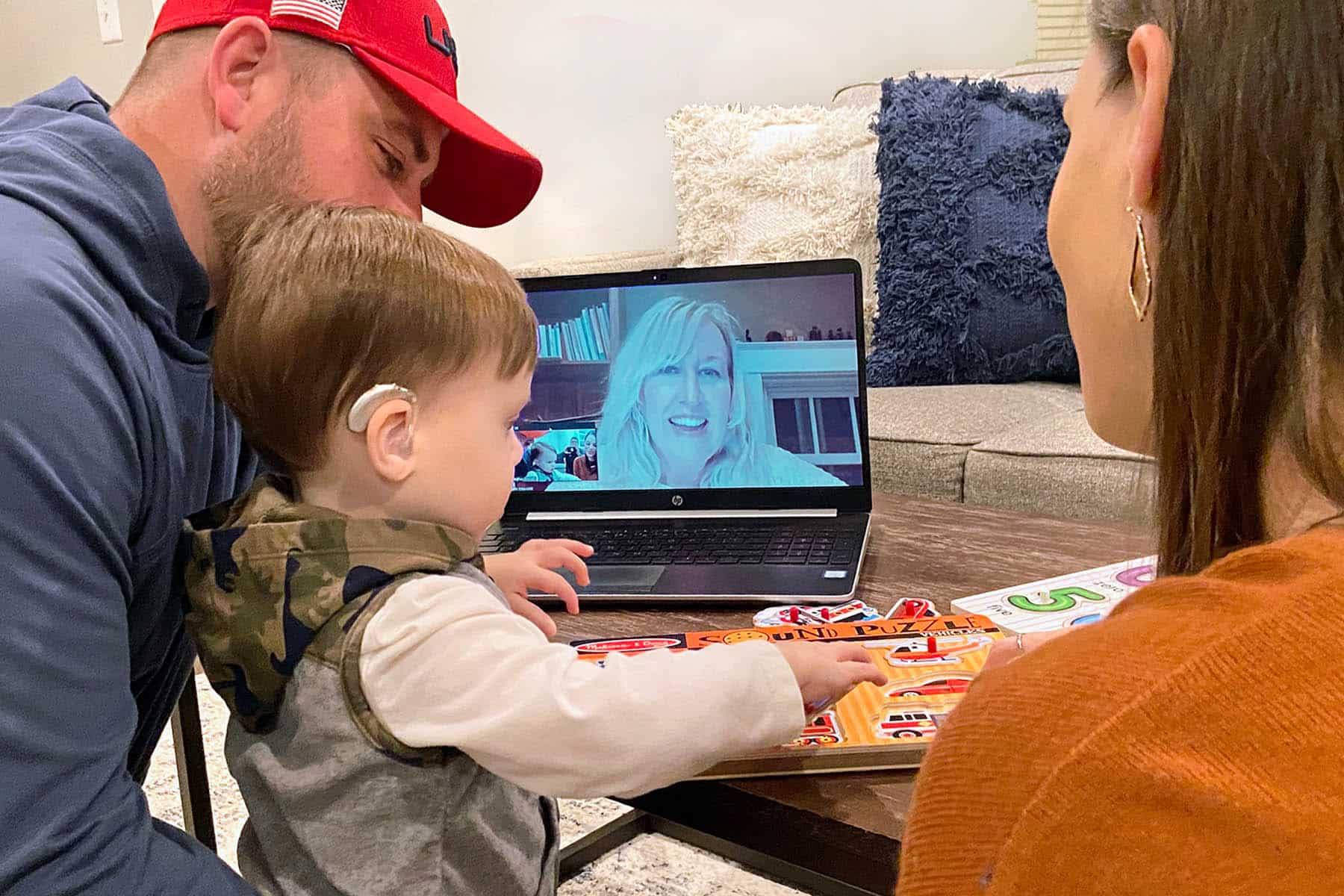Have you ever wondered if you could take your knowledge from in-person sessions and utilize it in a tele-intervention service delivery model? You can! However, there are a few differences to consider that will ensure a smooth and effective session for provider and family alike.
Teleintervention is a service delivery model that is widely utilized to connect families of children with hearing loss to early interventionists via two-way video conferencing. Through the use of teleintervention, parents and caregivers have proven to be more hands-on, leading to greater carryover of strategies into daily routines and therefore statistically significant language outcomes for their child with hearing loss.
When providing services over the internet, early interventionists must employ unique strategies to ensure a successful family session. Such strategies include assessing the home environment from a distance, using appropriate learning materials, considering and supporting family needs, and relying on parent report. In addition, early interventionists must use and coach specific functional strategies that allow for successful use of technology, such as assessing the auditory environment, lighting, and camera positioning. Employing these unique strategies allows for more effective sessions when utilizing the teleintervention service delivery model. Through the use of these strategies, sessions run more smoothly, the family-provider relationship is strengthened, families gain confidence integrating listening and spoken language techniques into their daily routines and activities, and ultimately, families become more empowered to improve their child’s listening and spoken language proficiency.
You can use these strategies for families that live far away. Through leading questions and active listening, learn about their home environment and gauge the family’s available materials for planning sessions without in-person observation. When you cannot tell if the child has learned to activate a cause-and-effect toy, rely on parent report, which helps the parent become an active observer of her child’s actions and builds trust in the parent-provider relationship. Further, through increased positive, auditory feedback, build the parents confidence when employing new listening and spoken language strategies during a session. These strategies become such a natural part of her interactions with her child that you observe the parent successfully using these strategies in subsequent sessions, ensuring that she is truly incorporating them into their daily routines.
For 10 teleintervention tips for effective sessions, download our free pdf on our early intervention resource page.

Kailie Asam was a parent educator at Central Institute for the Deaf- CID. She holds a Master’s Degree in Deaf Education from the Program in Audiology and Communication Sciences at Washington University in St. Louis, MO. She also has certification from the Council on the Education of the Deaf (CED).












